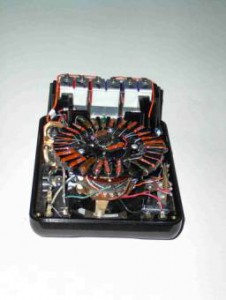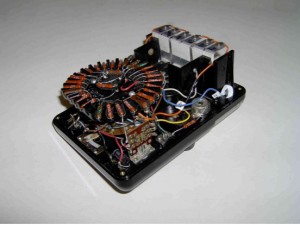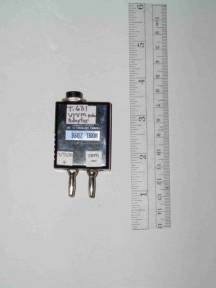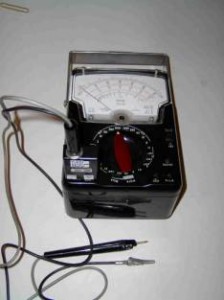Triplett 631 Battery Conversion
Battery Conversion for your Triplett 631
I found this item on the web. Obviously someone has spent a great deal of time and effort creating this guide.
If this was you, please get in touch so I can credit the work correctly.
This procedure describes one possible method to convert the Triplett 631 VOM-VTVM to currently available 22½V batteries, Eveready 412, Neda 215 (or Duracell M215), which are available from companies such as Newark, Mouser, Digikey, McMaster-Carr, Radio Shack, and Triplett (PN 37-50). To achieve as much electrical capacity as the two original, discontinued, Burgess XX-15 22½V batteries, this procedure describes how to install six #412 batteries in three double-size Keystone #178 battery holders, also available from the above companies. Before starting this conversion, study Triplett 631 Instruction Manual, that describes the electrical parallel/serial connection of the two sets of 22½V batteries to achieve the required 22½V and 45VDC. The manual is downloadable from the Internet or available from Triplett.
Three #178 double battery holders are installed because six single battery holders (#177) will not fit into the Triplett case. The Keystone holders allow one to quickly and easily change batteries. Remove the (fragile, glass) 1R5/DK91 amplifier tube before starting this procedure and store the tube in a safe place. Short the two meter terminals with a jumper wire (dont solder) so the meter needle will self-damp to prevent any damage. Referring to Photo-1, remove the two horizontal molded Bakelite (plastic) bars that originally supported the two XX-15 batteries, to provide space for the new Keystone holders. Use a small Dremel or other rotary tool with the standard 1 dia. X 0.040 fiberglass-reinforced cutoff wheel installed. The emery cutoff wheels are dangerous as they can shatter at high speed. Wear safety goggles. Finish the bar removals using a sharp wood chisel or round bur. Do not remove the two plastic bars under the large D cell battery.
 Photo-1
Photo-1
Bend inward about 25 degrees all twelve of the new battery holder terminals, as shown in Photo-2. This will help minimize the installed height of the batteries in the case. Dry fit (temporarily installing or trying something to see if it will fit or work in this application) the six batteries in their holders and place them in the meter case to make sure they will fit while leaving some air gap between each holder (refer to Photo-3 for battery case placement).


Photo-2 Photo-3
To provide a physical support wall to attach the battery holders, cut a suitable size rectangle (1.34inches X 2.662inches or to fit your case exactly) of approx. 1/16inch thick (1.6mm) acrylic, polycarbonate, or circuit board plastic; then notch two slots to clear the two D battery horizontal support bars. Glue this plastic wall in place with CA or epoxy. Photo-4 shows the top of this clear plastic support wall. A 1/16 inch thick plastic wall will leave about 1/32 inch air gap for the D cell battery. Allow at least several hours glue cure time before pressing on the wall.

Photo-4
Drill an approximately 5/32 inch diameter hole at an angle through the left Bakelite battery wall as shown in Photo-5 and Photo-6 to later route the (blue) B1+/B2- center-tap wire through to meter circuit. With the six batteries installed in the three holders, temporarily place them into the case (see Photo-2) and mark the best placement, leaving some air gap between each holder and between the end holders and the vertical Bakelite walls. Install the three holders with double-sided foam tape (such as auto-body-emblem tape, RC-battery/servo tape, or picture-mounting tape). Support the newly installed plastic wall from the backside as you press on the battery holders to make the tape adhere. Insure that the three battery holders are flush against the bottom (adjacent to the meter scale) Bakelite panel so they extend upward minimum distance. Remove the batteries from the holders. Wire the holders with stranded 20 or 22 gauge insulated hookup wire by referring to the Triplett circuit diagram and Photos 5, 6, and 7 that show left-side wiring, and front (top) wiring with batteries installed and then removed. Note that three of the batteries are the B1 batteries, and the other three batteries are the B2 batteries; the same labeling used in the Triplett circuit diagram. Label the B1, B2, +, and – places as shown in Photo 7. This will aid in proper battery replacement in the future. Dress wires through the hole and two upper notches already provided; filing away Bakelite from the two notches for wire clearance, if needed.


Photo-5 Photo-6
 Photo-7
Photo-7
To prevent possible battery drainage, place meter selector switch at 1200VDC and lower slide switch at V-Ohms-A (Right). Install all seven batteries, observing proper polarities, into their holders. As shown in Photo-8 hold case bottom cover in place and measure the gap with a caliper or feeler gauge, which is the thickness of Bakelite to be removed from the case cover inside wall. This thickness should be from 0.100 to 0.118 inches; and no greater than 0.125 inches. Photo-10 shows the plastic removal from case cover inner wall made with a hand-held inch router. The removal starts about inch from inner case wall top, and is 4 inches wide X 1 inches high, with total cut depth of 0.112 inches. A suggested power tool to remove the plastic is a hand-held inch collet & bit diameter router, shown in Photo 9. To help provide router stability and accurate cutting depth, make an accurate wooden spacer block that is then taped in place, shown in Photo 10. You can write router alignment lines on this block and place bright tape on the Bakelite plastic to help stay in the proper cutting boundary. The router bit needs to be at least inch diameter because it has to extend approx. 2 inches below the router platform to reach the wall it is to cut. A thinner bit that long might break off, becoming very dangerous. Do not use a drill press style router (such as Shopsmith) for this cut, because brittle/hard materials like Bakelite require very fast removal of the cutting bit if a problem develops. Before routering, clamp the case box, with firm thin rubber or gasket leather (suede) padding in a bench clamp or woodworker vise and provide good lighting. A vise could easily crack the Bakelite case, so be careful. Remove the plastic in at least two separate passes. The first pass should remove no more than 0.050 depth of plastic. Brittle materials like Bakelite should be removed very slowly, to prevent chipping or accidents. The bit must be sharp, to prevent burning the Bakelite. The second or third pass can achieve the final cut depth of approx. 0.112 inch.
A depth reading can be taken with a caliper with the foot attachment installed.
Keep the rest of the meter and other sensitive items away from the area, as the flying Bakelite dust and chips get into everything; wear a good dust mask and eye safety goggles, as with all power tools. If you do not have a inch router, a local machinist or experienced woodworker should be able to help. After finishing the cut, remove all dust from the cover, and then check the fit on the meter, with all batteries installed. If just small spots of plastic still need removal, a small oval or round bur on a Dremel tool can do this. Remove the meter terminal jumper wire you installed previously. This completes the battery conversion. Follow the Triplett 631 manual procedure to calibrate the VTVM circuit to the new batteries.


Photo-8 Photo-9


Photo-10 Photo-11
Sometimes the original Model 631 VTVM probe assembly is missing. One, of several solutions to this problem, is to adapt a commonly available VTVM probe from a Heathkit VTVM. These probes contain the required internal 1 Megohm resistor, but have a 1/4inch dia. mono phone plug on the other end of the cable. One can make a small conversion box from a Pomona #2098 (other brands and styles would also work) Bakelite box and Radio Shack #274-293 phone plug socket, as shown in Photo-12 and 13. The inch on-center banana plugs were repositioned to match the Triplett’s VTVM inch on-center banana jacks. The phone plug socket was installed in the top corner to preserve the existing Pomona structural rib and screw holes. In this way, the same probe set can still also be used with Heath or other brands VTVM’s. Photo 12 shows the completed VTVM probe adapter box installed on the Triplett Model 631.


Photo-12 Photo-13
 Photo-14
Photo-14


Hi Randy, Fred Scoles saying “Hi” from Oswego NY (13126), along Lake Ontario shore. I had written the above TTT631 batt conversion article for Mike Hahn (the last remaining original TTT engineer at Bluffton plant), and Dave Shafer (TTT’s web chief back in ’03 to ’06) in March 2003 for inclusion in Triplett’s website, where it stayed until about 2007 when their new owners (Jewell, Manchester NH) chose to delete all articles dealing with “classic” testers from the site. At that time (2003) there were only two other “searchable” 631 battery conversion articles on the web, of which neither of them was written well or would have even worked. Yes, I spent some time on it, but since 2003 there have been perhaps two or three other documented alternative 631 battery conversion methods published; both of them would possibly be a bit faster/easier than my method. Also, about 2012 (now a dim memory..) on Ebay (USA server) there was a 631 auctioned where the seller bragged that he had just installed brand new batteries in the unit, labeled like the original Burgess brand large 22 1/2V; but within a few minutes after I had emailed that seller to tell me where he had purchased those original style batteries, they not only removed their auction but also removed their Ebay ID…I haven’t seen new batteries like it since.
btw, that’s my hands and Dremel tools shown in the pictures.
Take care,
Fred
ps; we haven’t seen any of your postings on ARF (antiqueradios.com/forums) lately….?